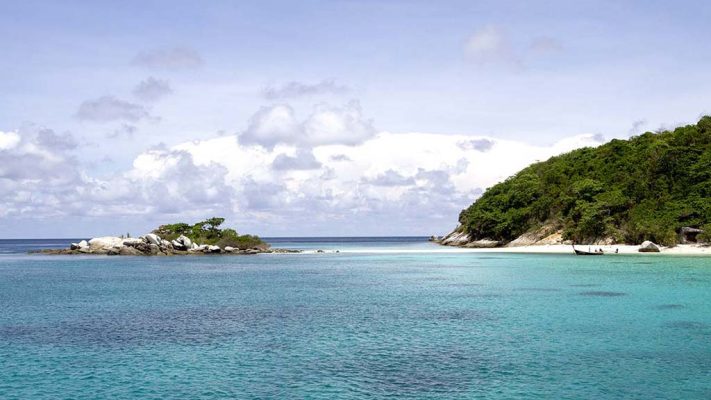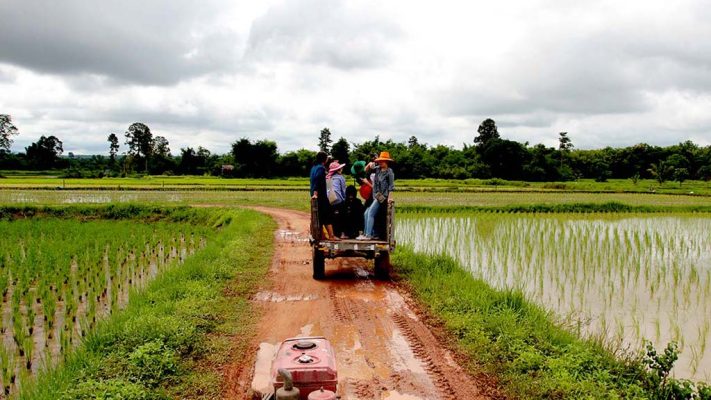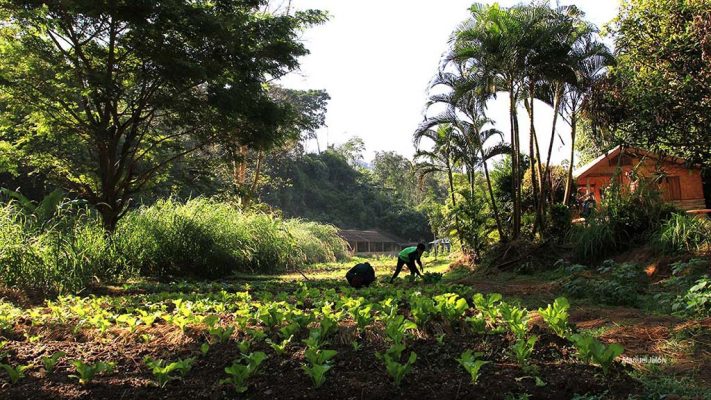As we told you in the post of the climate, the best time to visit Thailand goes from the beginning of the dry season to the end of the mild winter, that is, from November to February, although it is attractive all year adapting the trip to the conditions of the chosen dates.
Table of Contents
January, February and March
High season, but not the peak when the trip begins after Christmas. These months are excellent for travelling to Thailand.
The probability of rain is low while the forests keep the humidity of the water supplied during the last monsoons.

These months are considered the Thai winter. January and February are the coolest and in the mountains, the temperatures can get really cold, often with a morning mist that enhances the beauty of the landscape.
For many plant species, January is their particular spring. If you visit Chiang Mai, it will be a good time to go to Bhubing Palace.
This royal residence preserves majestic gardens and among them stands out the Suan Suarre rose garden.
In mid-February, the peasants in the north of the country begin to burn the fields to fertilize them and the resulting smoke accumulates in the atmosphere until mid-May when the first rains clean the environment.
Then, our suggestion is that from Mid-February to early May the nature-related activities in provinces like Chiang Rai, Chiang Mai or Mae Hong Son are less important in your trip and take advantage of the magnificent beaches on both coasts, as well as the national parks located in the south like Khao Sok.
At the end of January or February, the Spring Festival is held by the Chinese community, this is the first of the many celebrations throughout the country with the occasion of the new year, in February, March and also April.
Dates vary every year and many times it is not easy to know them far in advance, but if you have the chance, do not miss them, they are authentic and interesting.
April, May and June
Thai summer begins in March and the heat in April can be suffocating, especially during the central hours of the day.
It is convenient to get up early and start visits as soon as possible.
From noon to 4 pm avoid those outdoors and in case it is not possible we suggest using an umbrella so you can walk in the shade all the time.

The air conditioning in the restaurant or hotel, the swimming pool or receiving a massage in a conditioned room help to recover the tone and then continue with the program until the night.
In the case of Bangkok, a good situation of the hotel is key to organizing visits and breaks, avoiding wasting too much time on exhausting transfers.
In general, April is the last month of the high season and the Songkran festival in the middle of the month is once again a peak.
May is a month of transition, the first rains have to arrive and until then nature is relatively dry. When it happens, the fields are flooded and the planting of the rice begins.
July, August and September
These are months of the monsoon. However, regional variations entail that the beaches of the Gulf of Thailand have a better weather forecast, so the second half of July and all August are considered the high season.
Both in Bangkok and the interior of Thailand most of the activities, visits and excursions can be carried out normally simply with adequate equipment, that is to say, the wet weather should not modify your program.
Obviously, those who drive their own private vehicle have to pay more attention to the weather forecast.
You will probably have a bit of everything, sunny days, cloudy and rainy.

In general, it rains more in September.
Nature is more splendid and the landscape of the rice fields is very beautiful. The environment in activities such as hiking, cycling, whitewater rafting, the zip line and the visit to the elephant camp will have a special brightness.
Remember to bring more spare clothing and appropriate footwear, and it is advisable that at least one pair is adequate to get wet and even to enter the water if you walk through walking trails.
Carry airtight bags with you to store dry valuable objects, documents and even spare clothing during excursions and transfers.
In Bangkok, there are intense storms of a couple of hours in which necessarily you have to take refuge until the sky clears. They are more frequent at sunset.
If the forecast is heavy rains, you can take the opportunity to sign up for a Thai cooking course or focus on the places of interest of the town you are visiting.
During your stay at the beaches, some luck is needed, more if you choose the Andaman sea. If it is an island, you must pay special attention to the weather forecast for the day in which you must take the maritime link for the return to the continent.
It’s a good idea to have the best attitude, well, be happy whether you’re lucky or not, in this case just adapt to it.
On the other hand, in the low season, there is a wide availability of accommodation and at a better price, as well as less concurrence of travelers, which is undoubtedly an advantage.
October, November and December
October is the transitional month in which the monsoons usually end and the rice harvest begins. A sign of this is that in the second half maritime links increase their frequency getting ready to the next high season.
In October it is advisable to schedule your beach stage as late as possible.
As there is no change in the season until November, prices are better and destinations are less busy. There is no special reason to choose one coast or another, but we suggest the Andaman Sea, for example, Krabi. It does not have a better forecast, but it is located on the continental coast and if you are lucky with the weather you will enjoy paradisiacal beaches.

During the first full moon of November takes place the Loi Krathong festival. Although it is nationwide, the celebrations of Chiang Mai and Sukhothai are very famous.
In this month we recommend choosing your beach destination in the Andaman Sea, where you will find the most spectacular beaches of white sand and turquoise blue water.
Nature is in all its glory after the monsoon rain and it is easier to have an excellent time.
The second half of December and early January is the peak of the high season. If you plan to travel to Thailand at Christmas and especially in the year-end, make reservations far in advance, even in June, so that you can choose better based on your expectations.
